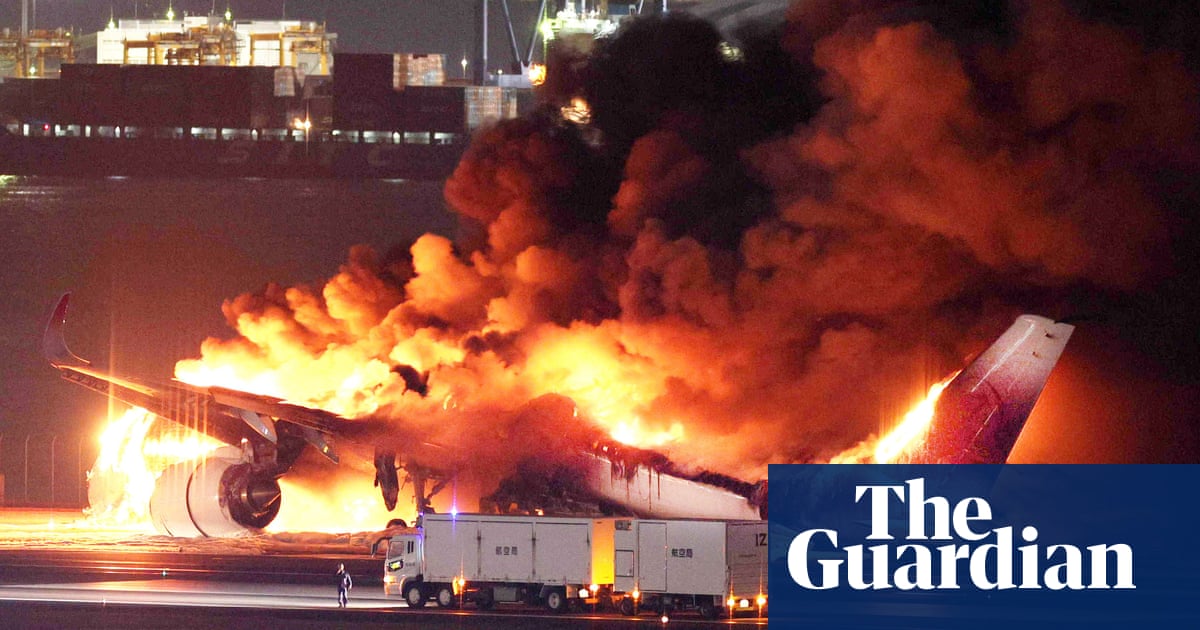
MANAMA (Reuters) - Romain Grosjean leaped to safety in a ‘miracle’ escape after his Haas car was ripped in half and engulfed in flames in a first-lap accident that halted Sunday’s Bahrain Formula One Grand Prix.
The 34-year-old Frenchman, who was able to free himself from the wreckage and jump clear of the fire after the car penetrated the barriers, was taken to a nearby military hospital for checks.
His team said he would remain in hospital overnight for treatment to burns on the back of both hands. X-rays had shown no fractures, they added.
“It is a miracle he is alive,” said Britain’s 1996 world champion Damon Hill, expressing his “absolute shock and horror” at the images on Sky television.
FIA medical delegate Ian Roberts rushed forward to assist Grosjean as marshals extinguished the burning car.
Haas said the last recorded speed of the car was 221kph while a spokesman for the sport’s governing FIA said the impact measured more than 50G.
“We just haven’t seen anything like that since Gerhard’s accident in Imola all those years ago,” said Hill, referring to a fiery 1989 crash that ruptured the fuel tank on Austrian Gerhard Berger’s Ferrari.
Replays showed the Frenchman, whose Formula One career already looked to be coming to an end with Haas having announced the departure of both their drivers at the end of the year, jumping out of the flames as marshals set off extinguishers.
The race was delayed for an hour and 20 minutes as track workers removed the wrecked barrier and replaced it.
Lewis Hamilton, who has already won a record-equalling seventh title and was leading from pole position when the red flags came out, shook his head in disbelief as he watched replays.
“I’m so grateful Romain is safe. Wow... the risk we take is no joke, for those of you out there that forget that we put our life on the line for this sport and for what we love to do,” said Hamilton on Twitter.
“Thankful to the FIA for the massive strides we’ve taken for Romain to walk away from that safely.”
HALO HELP
The death last year of Formula Two racer Anthoine Hubert at the Belgian Grand Prix was the first fatality at an F1 race weekend since Brazilian Ayrton Senna and Austrian Roland Ratzenberger died at the 1994 San Marino Grand Prix.
Jules Bianchi suffered serious head injuries in a crash at the Japanese Grand Prix in October 2014, succumbing to them in July the following year.
Hill said the halo head protection device, introduced in 2018, appeared to have saved the Frenchman from serious injury and Haas principal Guenther Steiner agreed.
“When you see what is going on out there, if you see the barrier that is torn down, it’s unbelievable,” said Steiner.
“I think we were lucky by being unlucky... we got away with it, I think.”
Medical car driver Alan van der Merwe, one of the first on the scene, said it had taken “a little while” to process the situation.
“I’m sure it was only a second or so but it felt like ages. And then Romain just actually started to get out of the car himself which is pretty amazing after an accident like that,” said the South African.
“The halo, the barriers, the seatbelts, everything worked how it should. Without just one of those things it could have been a very different outcome.”












